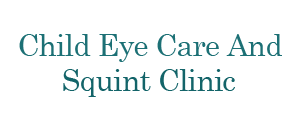What is squint (strabismus)?
.jpg)
Squint is a misalignment of the two eyes where both eyes are not looking in the same direction. This misalignment may be constant or may be present throughout the day or it may appear occasionally and the rest of the time the eyes may be straight; this is called as intermittent squint.
- Esotropia : The condition when eye turns inwards towards the nose.
- Exotropia : The condition when eye turns outwards away from the nose.
- Hypotropia: The condition when eye turns downwards towards the nose.
- Hypertropia : The condition when eye turns upwards away from the nose.
Majority of strabismus is the outcome of an abnormality of the poorly understood neuromuscular control of eye movement and less commonly, a problem with the actual eye muscle causes strabismus. Strabismus is usually genetically caused, however it can be acquired as well, in case of any head injuries, where the nerves responsible for eye movement and eye muscles are damaged.
-
Treatment option
- 1) Glasses - Some squint get fully corrected with glasses Eg.Accommodative esotropia Some need special glasses - prismatic-glasses
- 2) Exercises Eg. for convergence insufficiency variants
-
3)
Surgical correction
After squint surgery- sometimes glasses and patching is continued
Aim :
1.To prevent amblyopia (lazy eye)
2.Restore binocular vision
3.Gain stereopsis ( 3-d vision)
There are six different muscles attached to each eyeball and they tend to work in pairs.
During the Strabismus operation it is normal that for a pair of muscles one is weakened
and the other strengthened to make the eye straighter. It may be necessary to operate
on both eyes to balance them, even if the squint is only in one eye.
In some cases adjustable sutures will be used, so that shortly after the operation any minor
adjustments can be made to achieve the best possible position of the eye.
This is known to improve the success rate of the surgery in selected cases.
You may be asked to instill antibiotic eyedrops for a day or two preceding the operation to minimise the chances of infection. If the surgery is planned to be done under general anesthesia, you may be asked not to take anything orally for 4-6 hours before the surgery.
Anesthesia
Squint surgery is usually carried out under a general anaesthetic in children and local anaesthesia in Adults and is normally a Day care procedure. That means you are discharged from the hospital on the same day of the surgery.
1) The major risk of squint surgery is recurrence.
2) If recurrence happens,appropriate management is done.
3) The rate of recurrence depends on type of squint.
4) Other Intra operative risks have very lower preponderance.
5) Risk of anesthesia is there but today with good drugs of management ,its also lowered.
2) If recurrence happens,appropriate management is done.
3) The rate of recurrence depends on type of squint.
4) Other Intra operative risks have very lower preponderance.
5) Risk of anesthesia is there but today with good drugs of management ,its also lowered.



